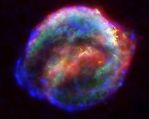
Subject Index / Science / Physics / Space (Astronomy)
Background Information
SOS Children, an education charity, organised this selection. SOS Child sponsorship is cool!


SOS Children, an education charity, organised this selection. SOS Child sponsorship is cool!
